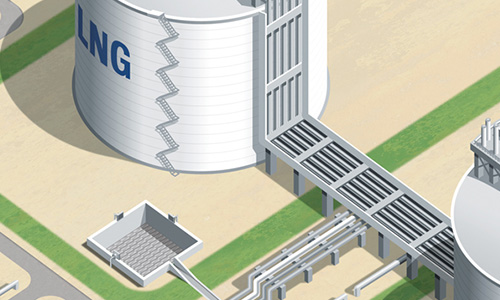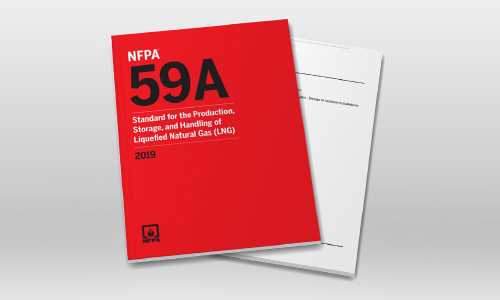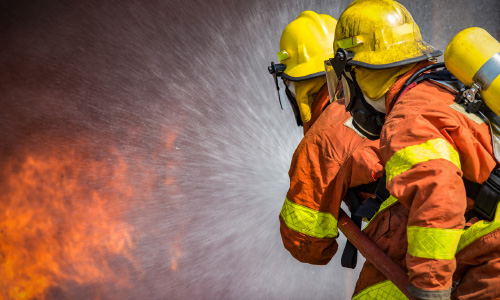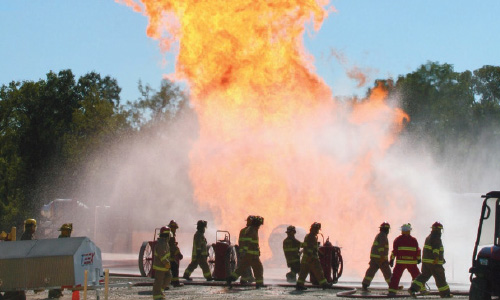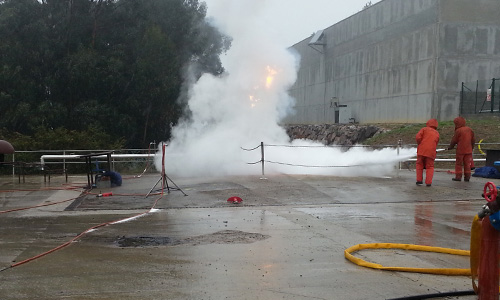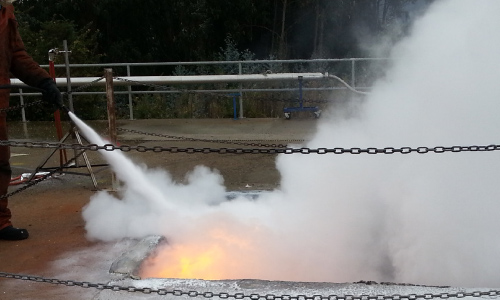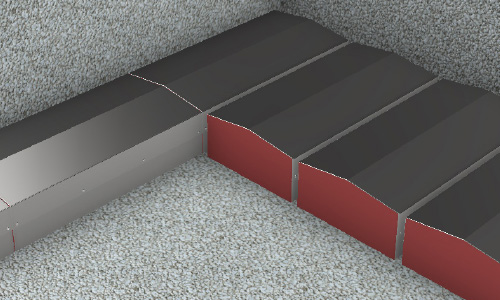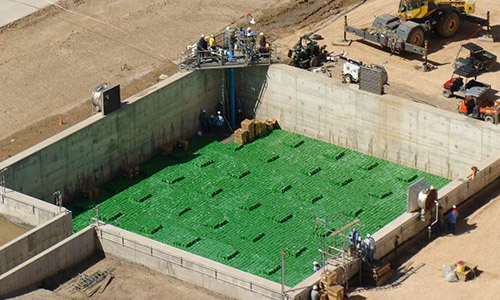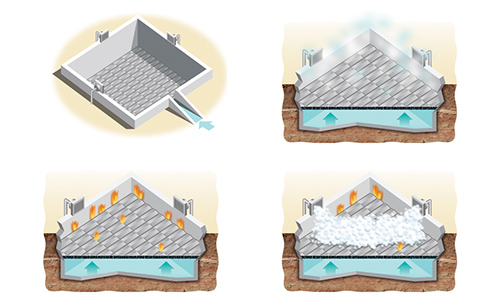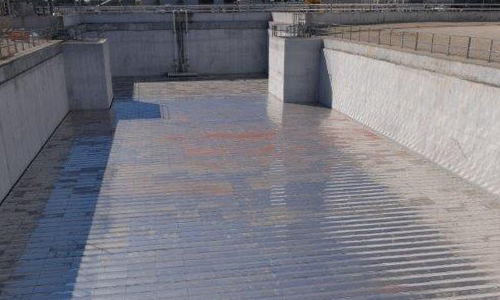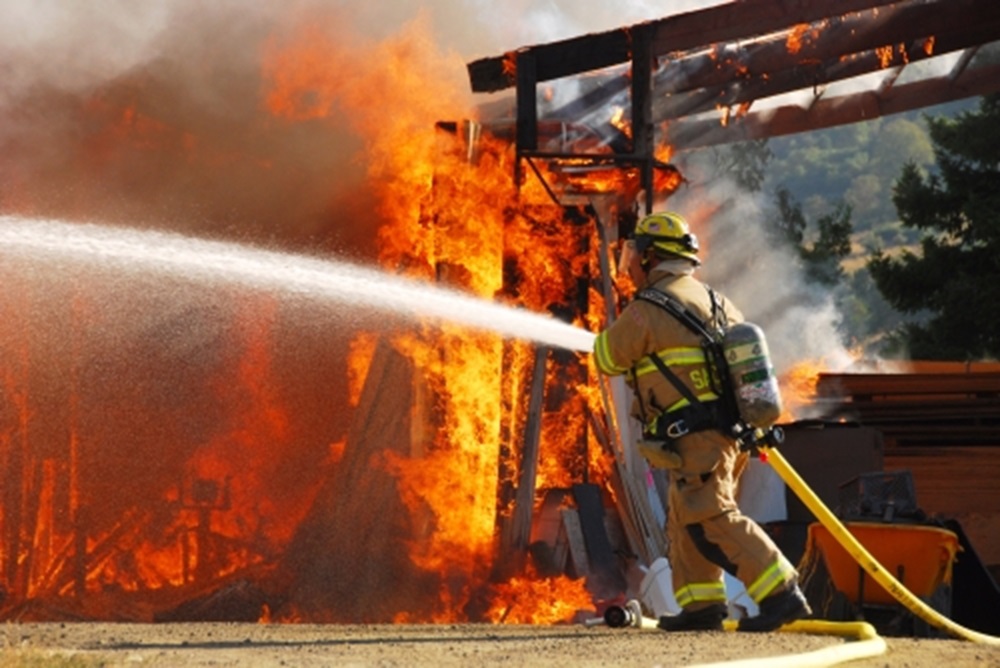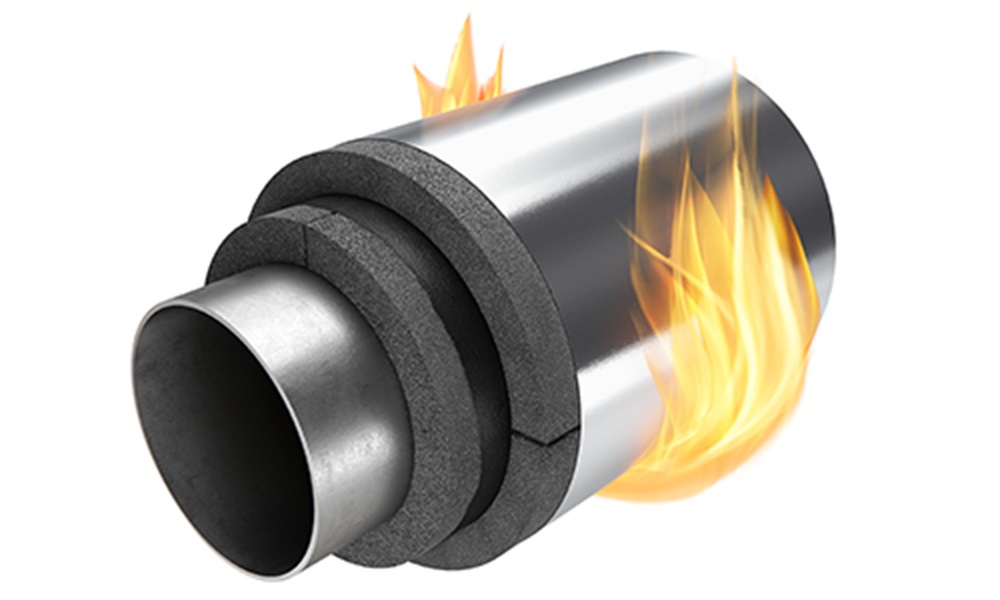Passive fire protection for LNG impounding basins
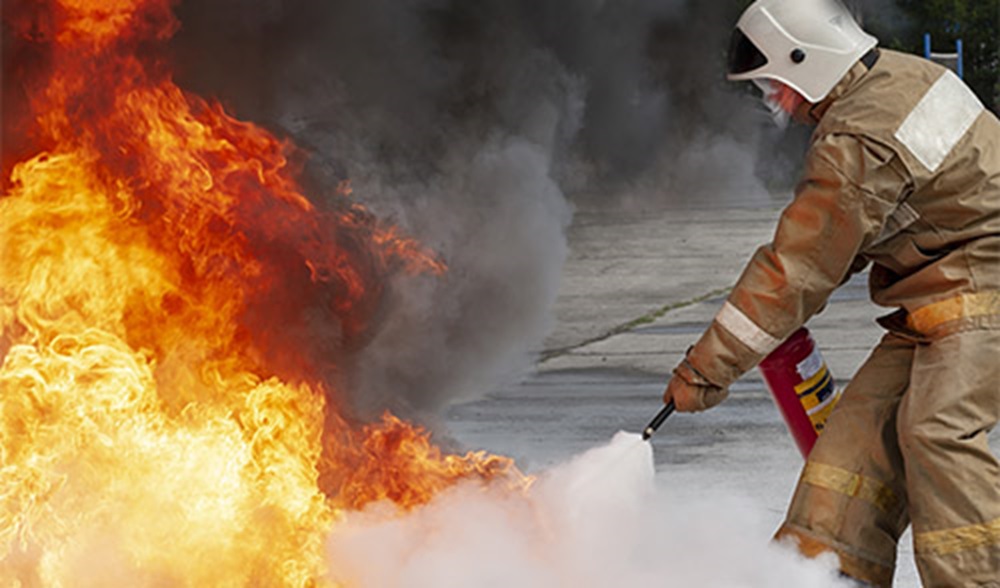
New LNG facilities are being built to support the increasing global demand for energy, prompting a focus on the safety of these facilities. One of the key areas of concern for facility owners is unintentional product release or spill and the industrial fire risk associated. This concern is particularly focused on and around the LNG storage tanks. Companies looking to shrink facility footprints, maintain safety, and operate in new ways have led them to explore innovative technologies for helping to keep people safe and protecting equipment assets.
LNG IMPOUNDING BASINS
Most emergency incidents in an LNG site involve a spill or a fire. Most modern LNG facilities are designed so that product spills are routed away from process equipment and into an impoundment basin (sometimes referred to as a spill containment pit) via a spill containment system.
An impounding area can be formed by a natural barrier, dike, excavation or impounding wall. For double containment tanks where the edges of the bund walls are more than 15 m (49 ft) away from the tank, a spill containment pit is usually located within the impounding area.
Impounding basins are concrete sumps designed to collect liquid product spills. The surfaces of the containment pit (walls and floor) are typically insulated to protect against the thermal and mechanical stresses and loads that are anticipated in the event of a spill. The basins are equipped with pumps, drainage systems and active and passive firefighting systems.
Standards and regulations
EN 1473: Installation and equipment for liquefied natural gas — Design of onshore installations
For European sites, governing guidelines are found in EN 1473: Installation and equipment for liquefied natural gas — Design of onshore installations. This standard provides industry guidelines for the design, construction and operation of all onshore liquefied natural gas installations for the liquefaction, storage, vaporization, transfer and handling of LNG. The standard further describes the design of impounding basins including materials, location, drainage systems and active and passive fire protection measures.
NFPA 59A: Standard for the Production, Storage, and Handling of Liquefied Natural Gas (LNG)
The US equivalent of the EN 1473 is the NFPA 59A: Standard for the Production, Storage, and Handling of Liquefied Natural Gas (LNG). This standard provides minimum fire protection, safety, and related requirements for the location, design, construction, security, operation, and maintenance of liquefied natural gas (LNG) plants.
Similar design considerations are described but this standard is more specific compared to the European standard as it is based on conditional risk analysis. It also allows the use of passive fire mitigation methods (such as thermal radiation reduction systems) in the modeling and calculation of thermal exclusion zones.
Fire risk in impounding basins
One of the major hazards considered in the LNG industry is a pool fire – where a flammable vapour cloud of natural gas ignites. Natural gas can be ignited in various ways including, static electricity, a lit match, cigarette lighter, or other ignition sources. Pool fires can ignite additional fires at a facility, cause explosions, and can endanger on site personnel.
When LNG spills from low-source pressures or in pressurized releases, the liquid will vaporize and generate an invisible, flammable cloud of gas. In low pressure incidents, LNG can be directed to a spill containment pit or sump that can be used to reduce the volume of LNG that vaporizes as the cold liquid boils when it comes into contact with the warmer ground, containment walls, or warm air.
High-pressure releases may generate flashing jets or sprays of the liquid. If the liquid is spilled, it can produce a visible cloud of water vapour, an indicator of the presence of vaporized natural gas. The LNG vapour is flammable in specific concentrations (from 5 to 15% by volume).
As a result, the LNG vapor can travel away from a storage pit or containment structure before it reaches the correct concentration to ignite. That movement may create a traveling fire hazard that could be blown toward an ignition source.
These conditions make fires above a pool of LNG a big industry concern. A large pool fire is considered one of the most serious hazards that handling and storing LNG presents.
Fire suppression methods
Suppression methods for potential fires are designed to reduce hazards such as radiant heat and flame height. Based on past research, high expansion foam was regarded as the primary technology in suppressing LNG pool fires. These high-expansion foam generation systems are installed in the impoundment area and are activated either manually or automatically by low temperature detectors or by UV fire detectors located in the impoundment sump. The high-expansion foam generation systems are costly and the system cost increases significantly with the dimensions of the containment pit.
An alternative option that is being rapidly adopted is the FOAMGLAS® insulation Pool Fire Suppression™ (PFS) system. The FOAMGLAS® PFS™ system combined with a traditional expansion foam fire suppression system increases the speed at which fires are suppressed. The system therefore improves facility and employee safety. When tested the combined system and has shown favorable results when compared to a traditional standalone foam suppression system used as the only method in addressing LNG pool fires. The FOAMGLAS® PFS™ system reduces the amount of expansion foam needed to extinguish a fire if it occurs. This provides significant cost savings since the high-expansion foam generation system may be downsized when combined with the FOAMGLAS® PFS™ system.
Scale tests conducted by Shell Research Ltd, showed that a depth of 200 mm of cellular glass assisted in providing immediate and automatic control of the fire at a level comparable to 1 – 2 m (3.2 – 6.5 ft) of high-expansion foam. Results of large-scale experiments performed at the Emergency Services Training Institute of Texas A&M University have shown that the view factor of an LNG pool fire suppressed by a FOAMGLAS® PFS™ system is comparatively lower than that of high expansion foam, providing real protection from thermal radiation for exposed equipment or personnel. With maximum flame height significantly reduced at a steady state, the thermal radiation is limited to visibility within the much lower temperature range of 200ºC – 500ºC (391°F to 932°F).
Additionally, field extinguishing trials were successful in demonstrating the system’s performance. These trials, performed on an LNG test pit of 9 m² (100 ft²), showed that firefighters equipped with a single 9 kg (20 lb.) dry chemical extinguisher were able to directly approach the edge of the containment pit and extinguish the flames within seconds with only a partial charge.
THE FOAMGLAS® PFS SYSTEM
The FOAMGLAS® PFS™ system contains specially formulated low-density cellular glass that has a combination of physical properties not found in traditional fire suppressant foams. Made of cellular glass, the material is both extremely buoyant and nonflammable. The pool fire suppressant module system is non-corrosive and resistant to water and vermin. It is also fiber-free and has a high compressive strength. The FOAMGLAS® PFS™ system works in conjunction with firefighting foams. Damaged or post incident waste materials can be disposed of as standard refuse and can be compacted for reduced waste volume.
The FOAMGLAS® PFS™ system complements any safety program by delivering a reliable, cost saving, low-maintenance passive solution for the reduction of thermal radiation and flame height in contained LNG fires. It is easy to install and can provide immediate mitigation of the thermal flux, rate of combustion, view and overall size of an LNG pool fire.
The Generation 1 PFS™ system consisted of FOAMGLAS® PFS™ cubes that were packaged in easy-to-handle, UV-resistant bags that would rest uniformly in an impounding sump or other containment area. These units could be easily installed on site and did not require any specialized skills or equipment to install or maintain.
After widespread adoption of the Generation 1 system, the FOAMGLAS® PFS™ Generation 2 pool fire suppressant system was introduced to address requirements for extended resistance to weathering and poor climatic conditions, as well to improve the working surface for easy snow removal.
The FOAMGLAS® PFS™ Generation 2 pool fire suppressant system, like its predecessor features FOAMGLAS® cellular insulation. The new generation system consists of interconnected modules that are made of a cladded insulation core and assembled in the containment pit in an orderly fashion. The FOAMGLAS® PFS™ Generation 2 pool fire suppressant system covers the containment area with one continuous, buoyant, passive fire suppressing system and provides a more polished look compared to the FOAMGLAS® insulation filled polyethylene bags used in the Generation 1 system.
So how does it work?
Both pool fire suppressant systems share similarities in terms of overall functionality. The durability improvements made for Generation 2 make it easier to maintain and will be more effective in containing pool fires while helping to protect employees and equipment.
The FOAMGLAS® PFS™ systems are passive systems that remain in place to assist in providing immediate and automatic control of LNG pool fires without deployment delays. Because it is highly buoyant, the pool fire suppressant modules rise immediately to the surface of the LNG to provide an insulating cap that reduces the rate of LNG vaporization. In the event of ignition, the FOAMGLAS® PFS™ modules quickly limit thermal radiation and flame height. The system works in conjunction with firefighting foams.
Real-life applications
Multiple large LNG facilities across the world have adopted the PFS™ system to help improve facility and employee safety around their LNG tanks.
The FOAMGLAS® PFS™ system has been installed in the impounding basins of LNG Terminals such as Yamal LNG (Russia), JAX LNG (USA) and Tangguh LNG (Indonesia) as part of their ongoing goal to improve and upgrade safety measures for maintaining potential pool fires.
The LNG Terminal designers chose this system because it is easy to install, provides cost savings, maintains continuous passive fire control and has excellent long-term resistance to poor weather conditions without the need for regular maintenance.


